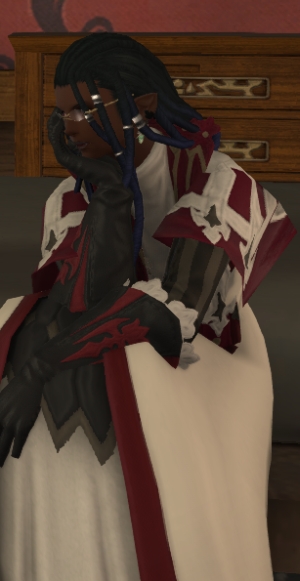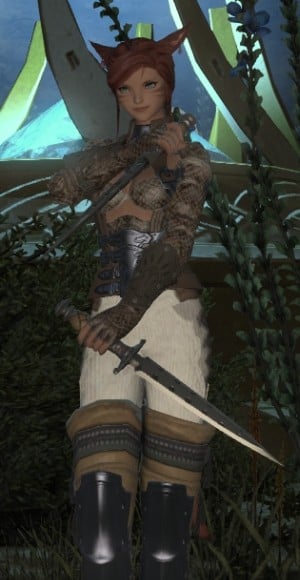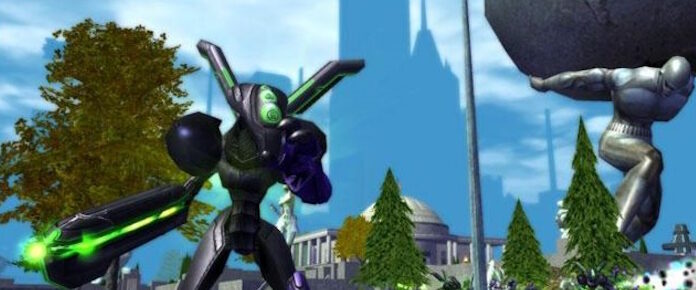
I don’t have the same amount of history with Final Fantasy XIV as I do with Transformers, of course; there’s no way that a game from a few years ago can gain three decades of history, after all. But there are still some misconceptions that people have about the game that are, objectively, not true. You can argue over whether white or blue is a better color for a piece of armor, after all, but you can’t argue that the white one is actually blue. So, in the interest of clarity, let’s look at some of these misconceptions and address them in turn.
Myth: FFXIV’s lore is written in Japan and then translated to English
 This is what I like to think of as the Nintendo myth. In the days of the SNES and early PlayStation releases, Square-Enix games followed a pretty one-sided pipeline, with the game’s full text being written in Japanese and then handed off to American writers to handle localization. Sometimes, the result was still pretty good (Final Fantasy VI), while other times the localization team was something less than impressive (Final Fantasy Tactics). It was still a one-way street, with the Japanese staff only being aware of the English localization well after the fact.
This is what I like to think of as the Nintendo myth. In the days of the SNES and early PlayStation releases, Square-Enix games followed a pretty one-sided pipeline, with the game’s full text being written in Japanese and then handed off to American writers to handle localization. Sometimes, the result was still pretty good (Final Fantasy VI), while other times the localization team was something less than impressive (Final Fantasy Tactics). It was still a one-way street, with the Japanese staff only being aware of the English localization well after the fact.
Whether or not this is still the case with other Square-Enix games is not entirely clear (although it certainly does not appear to be), but we’ve been told on many occasions that this is not the case with FFXIV. Without delving too deeply into the details of the process, I can say that localization and translation starts well before final dialogue is written, and the coordination for localizing starts right away in the prototyping stages. The final version in both languages matches the meaning across regions.
If you think about this, it only makes sense; if the old pipeline were being used, the Japanese team would finish the patch, then simply sit on it while the localization team translated it, resulting in much greater regional delays. We also wouldn’t have issues like the back-and-forth the the name of the last boss in Labyrinth of the Ancients, who was originally named Acheron due to a miscommunication regarding that name being used for later enemies (in Japanese, the enemy is named a variant of “Titan” that’s distinct by spelling).
Myth: FFXIV is still a patched version of the original game
 When Final Fantasy XIV first announced a major reboot, by all appearances, the game was going to be patched up to a much better version. Sure enough, once Naoki Yoshida took over on the game, a lot of concepts that are now familiar to the playerbase were patched into the game piece by piece. As a result, it’s easy to look at version 2.0 and assume that it is, fundamentally, a patched version of the original game; even the name supports that!
When Final Fantasy XIV first announced a major reboot, by all appearances, the game was going to be patched up to a much better version. Sure enough, once Naoki Yoshida took over on the game, a lot of concepts that are now familiar to the playerbase were patched into the game piece by piece. As a result, it’s easy to look at version 2.0 and assume that it is, fundamentally, a patched version of the original game; even the name supports that!
The reality is that Final Fantasy XIV is an entirely different program right now than the launch version, hence why players in the various beta tests had to download and install a completely new client. While a number of the systems are familiar, the new game was built completely from the ground up, starting by using an entirely different graphical engine. That alone should serve as an indicator that the game is rebuilt from the bottom level; the original version of FFXIV was poorly optimized and based on development engines.
Yoshida has said in a variety of interviews that the original version of the game was incredibly difficult to actually patch due to a particularly convoluted code structure, which certainly doesn’t line up with the current game receiving patches on an almost clockwork schedule. That’s without diving into the technical aspects of both games and the number of elements that had to be “translated” from one game to the other. While the two games are meant as a single whole, it would be wrong to think of the current version of Final Fantasy XIV as simply an update of the launch version; the launch version, at most, exists in the new game in the form of certain assets rather than coding.
Myth: The PlayStation 3 holds everything back in development
There’s a long-standing joke that the reason for anything going wrong in FFXIV comes from PS3 support. Why is housing set up the way it is? PS3 support. Why are inventory spaces limited? PS3 support. Why aren’t the graphics better? PS3 support. Clearly, the game has been shackled to obsolete hardware forever and players will never be able to get any meaningful upgrades!
However, this has been specifically refuted on both fronts. The development team has been very clear that PlayStation 3 support will be phased out based upon both the user base and how much the console hardware is impeding development; while Heavensward will support the console through the end of its cycle, support for the console will be re-examined and may well be dropped for the next expansion cycle. There’s no need to keep the console supported through the end of the game’s lifecycle.
Many of the issues that the game has regarding storage and the like simply comes from the fact that FFXIV characters take up a lot of database space, presumably more than the average character in other MMOs. The result is that it’s far easier for the game’s engine to run up against limitations and have issues with the sheer number of moving parts involved. That’s probably a good problem to have, in the long run, but it does make life irritating for players who need more storage space.

Myth: Yoshida said something based on a fan translation
This one isn’t exactly a myth, but it’s still something that we should be a bit careful with. Fan translations are not exact, and even when dealing with something like the live letters, the “unofficial” translations are off-the-cuff and not necessarily altogether accurate. That’s the reason for the much-later “official” transcripts, which clarify exactly what was meant in cases where it might have been ambiguous.
In other words, be aware that translations of what Yoshida said that don’t come from the staff might not catch the nuance or the intent behind statements. It’s all too easy to hear something bad and jump to conclusions that may later turn out to be entirely inaccurate.
As always, feedback is welcome in the comments down below or via mail to eliot@massivelyop.com. If you have any misconceptions you see that you’d like addressed, let me know about that in the comments, too. Next time around, I want to talk about the as-yet unimproved dungeons on the game and speculate about which ones can or even should have hard modes at some point in the future. Or I’ll talk about a newsbomb we get along the way, whichever comes first.
 The Nymian civilization hosted an immense amount of knowledge and learning, but so much of it has been lost to the people of Eorzea. That doesn’t stop Eliot Lefebvre from scrutinizing Final Fantasy XIV each week in Wisdom of Nym, hosting guides, discussion, and opinions without so much as a trace of rancor.
The Nymian civilization hosted an immense amount of knowledge and learning, but so much of it has been lost to the people of Eorzea. That doesn’t stop Eliot Lefebvre from scrutinizing Final Fantasy XIV each week in Wisdom of Nym, hosting guides, discussion, and opinions without so much as a trace of rancor.














